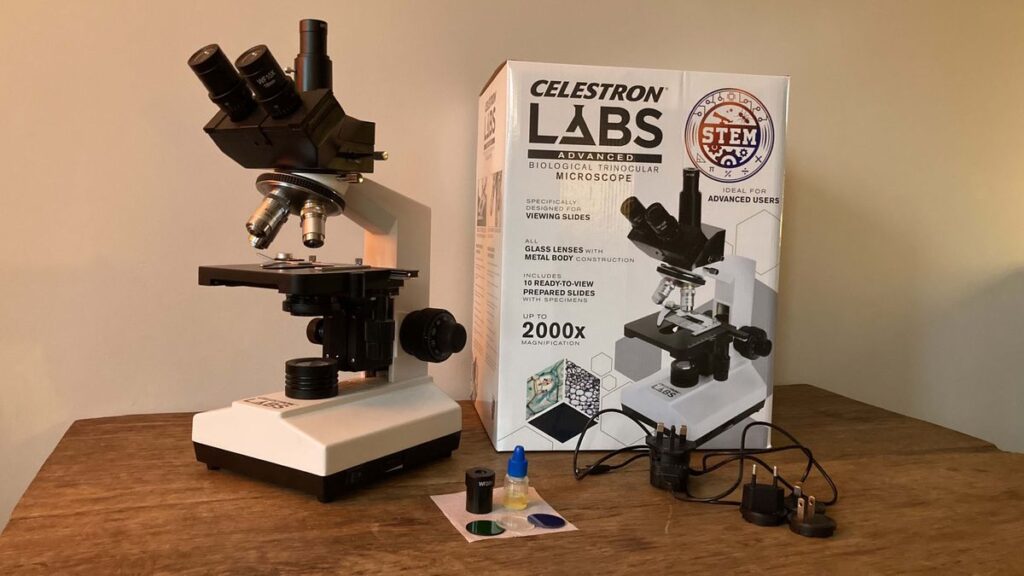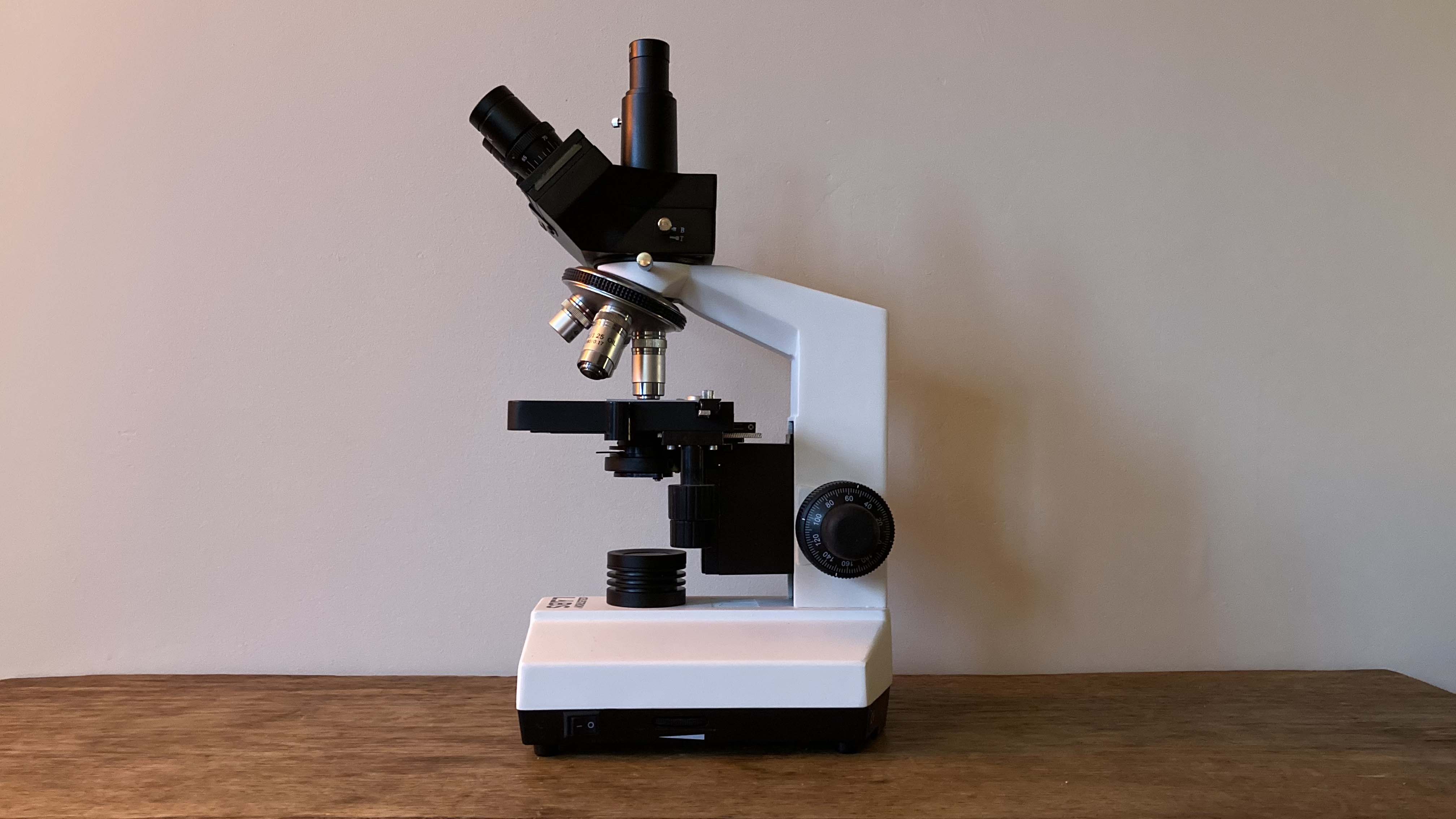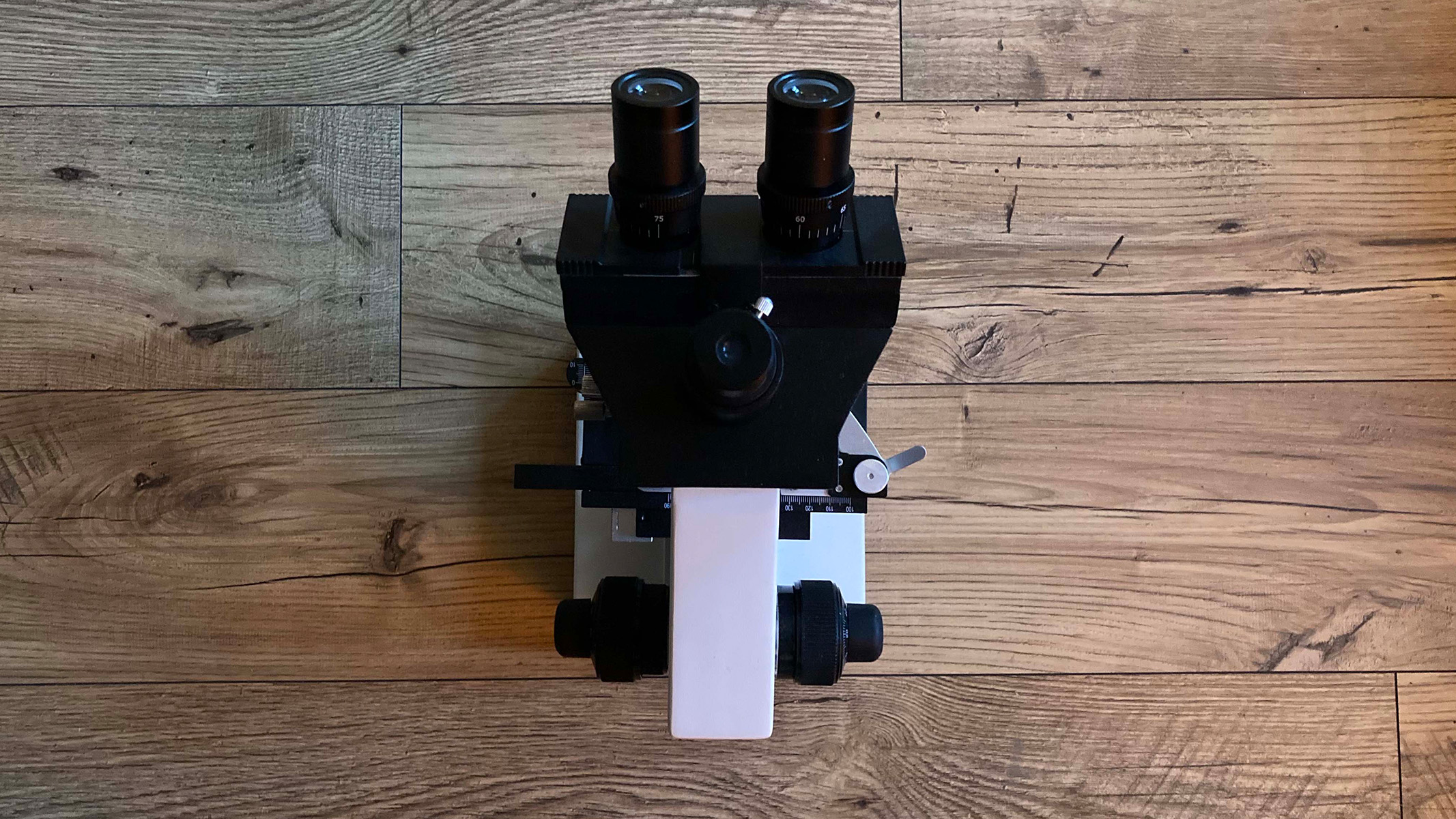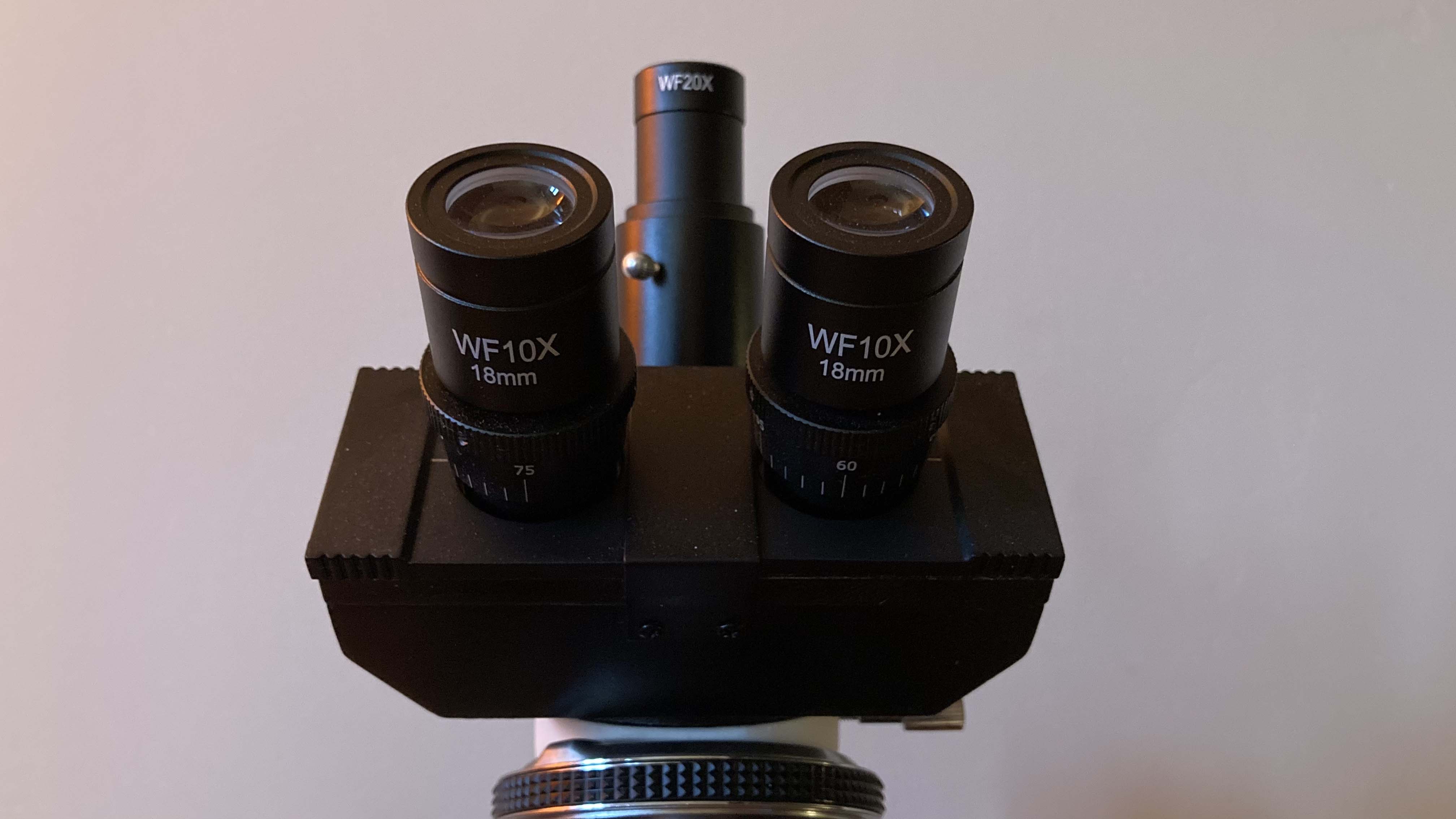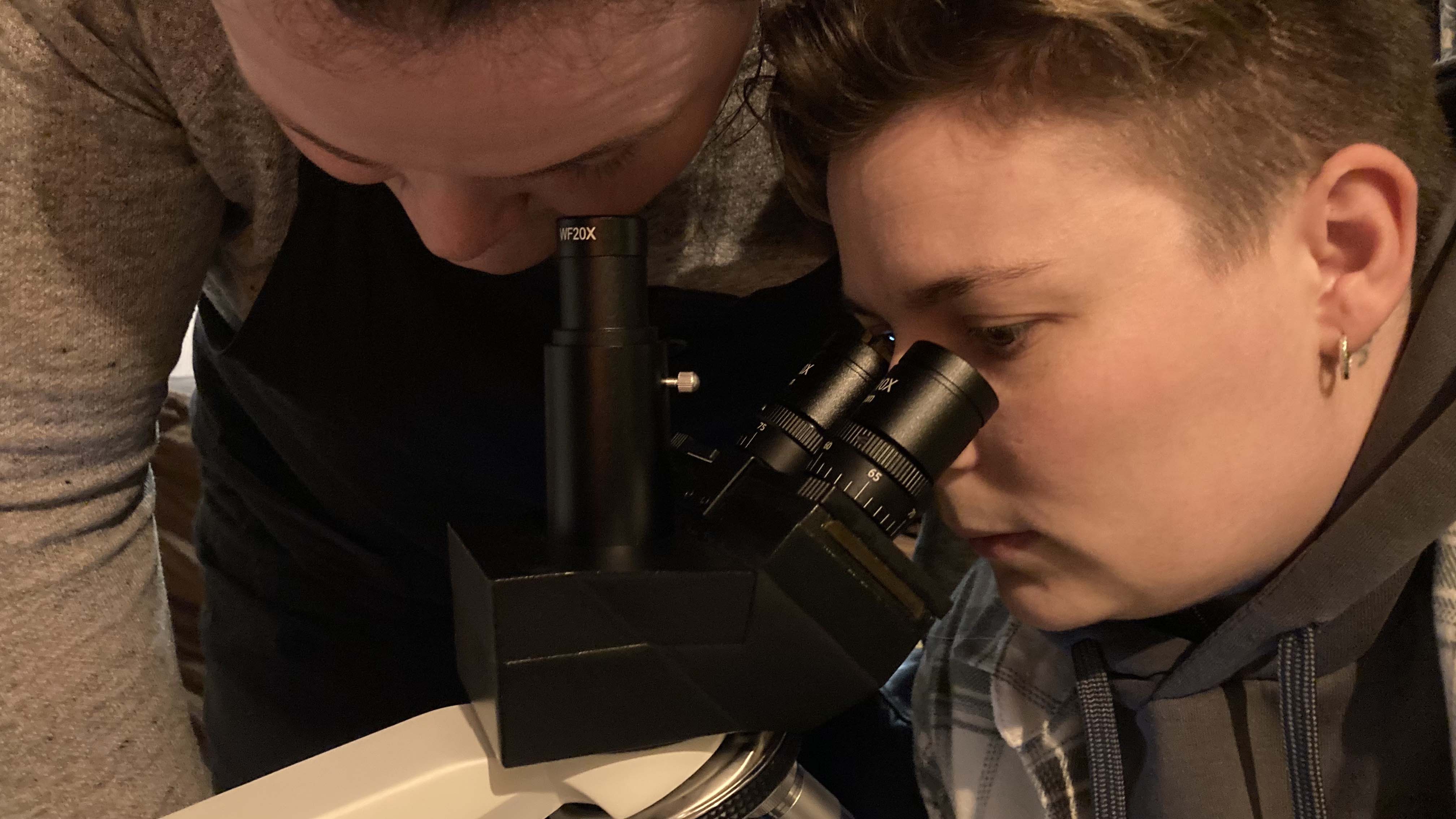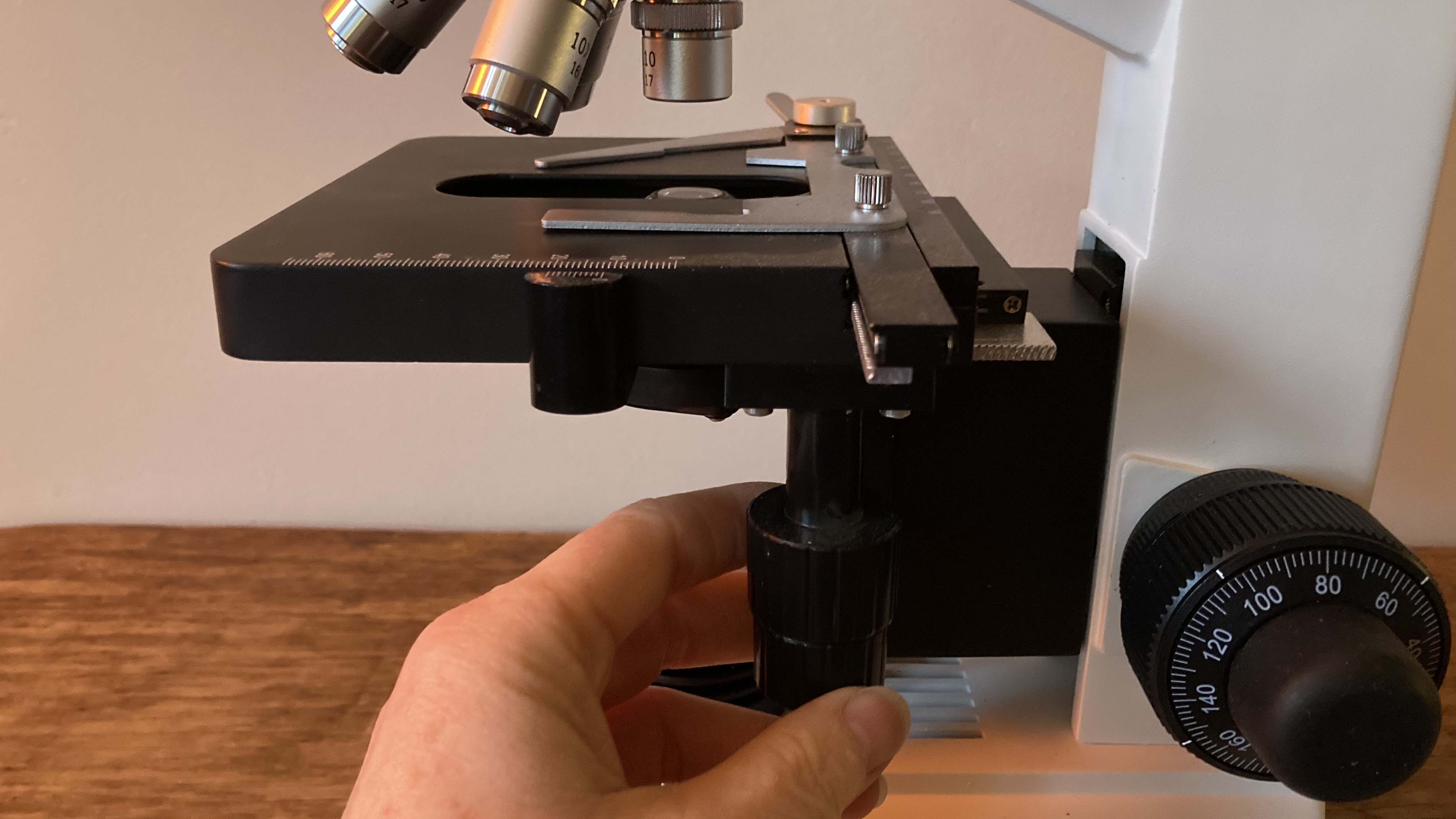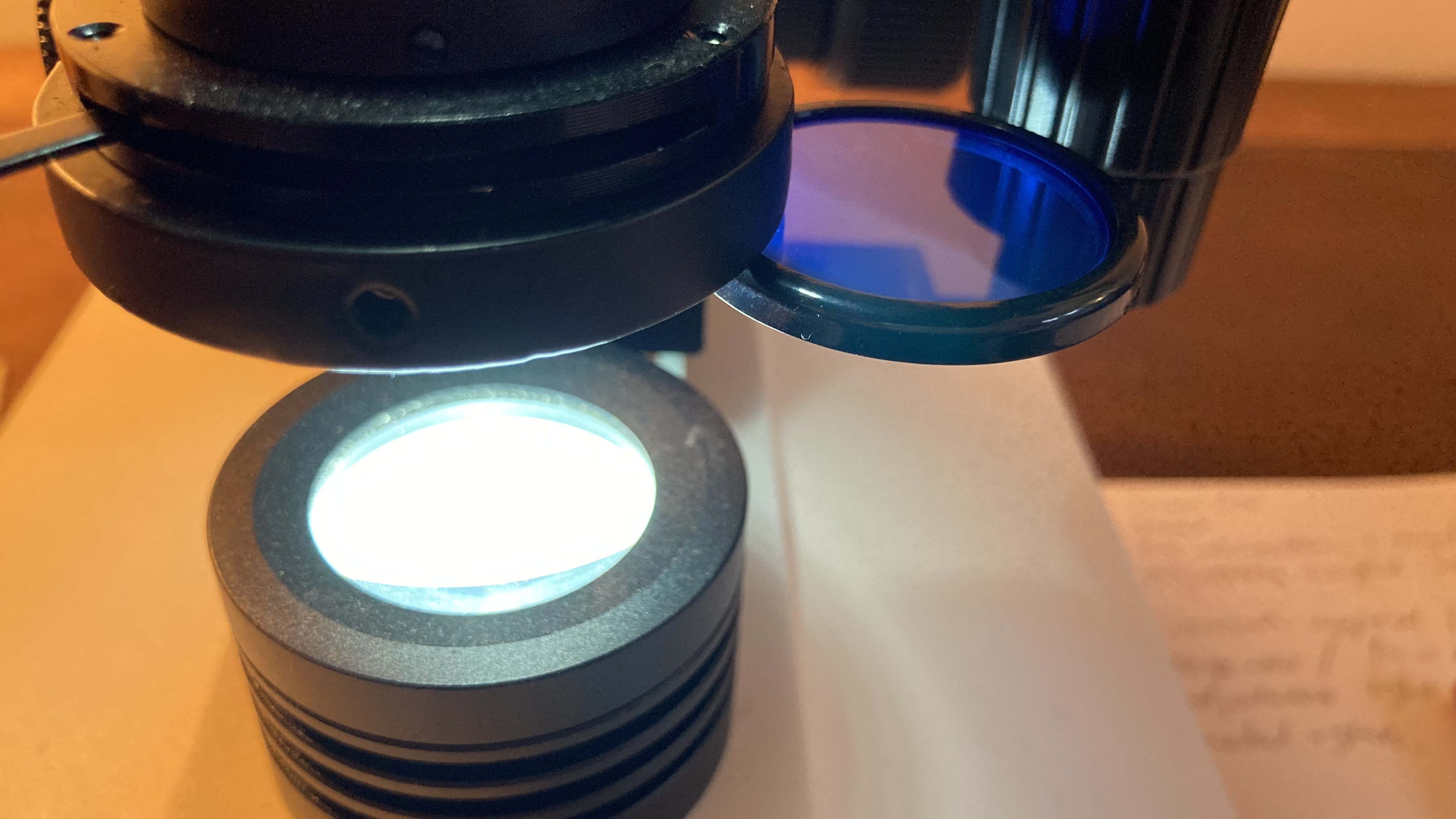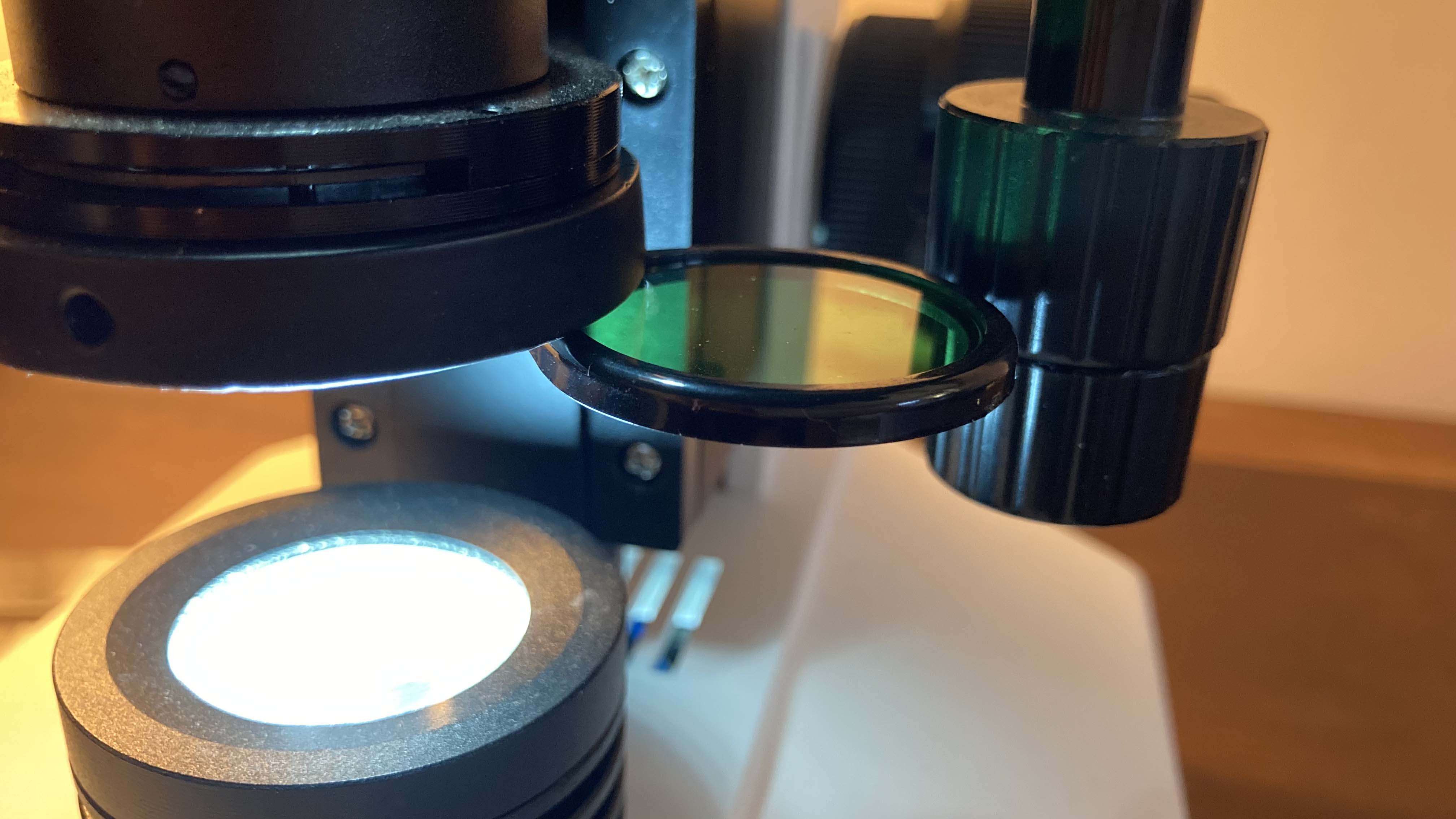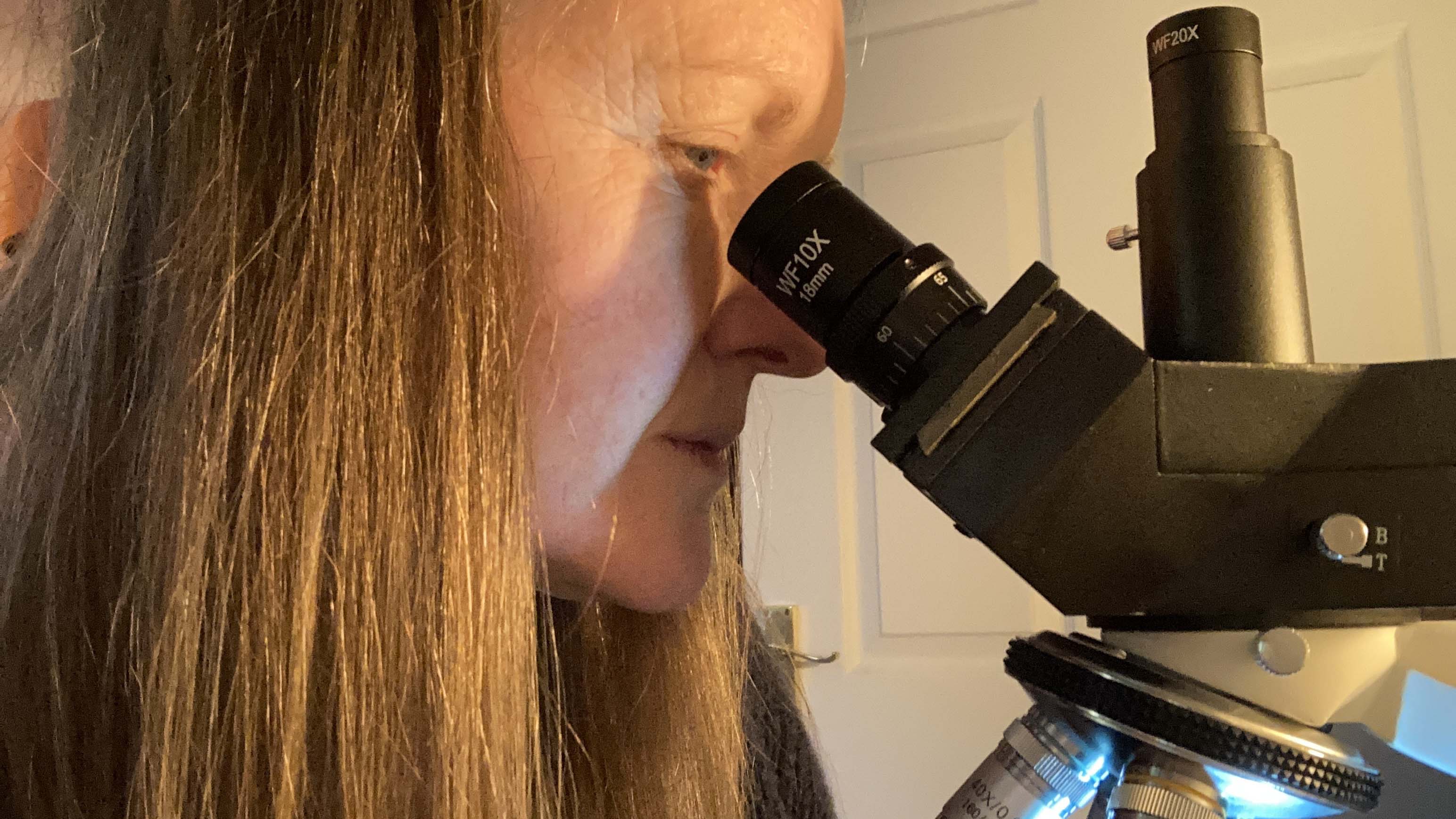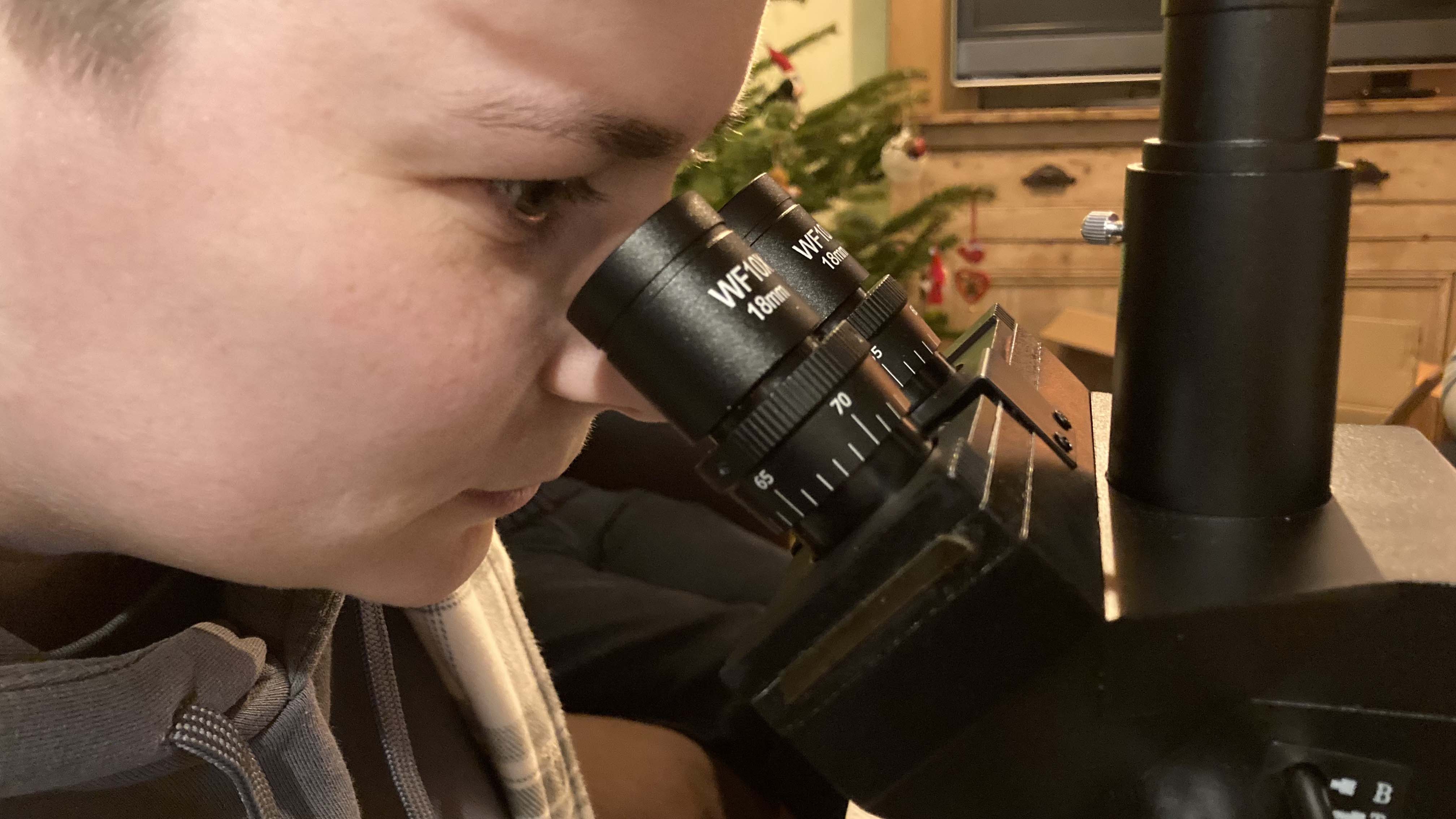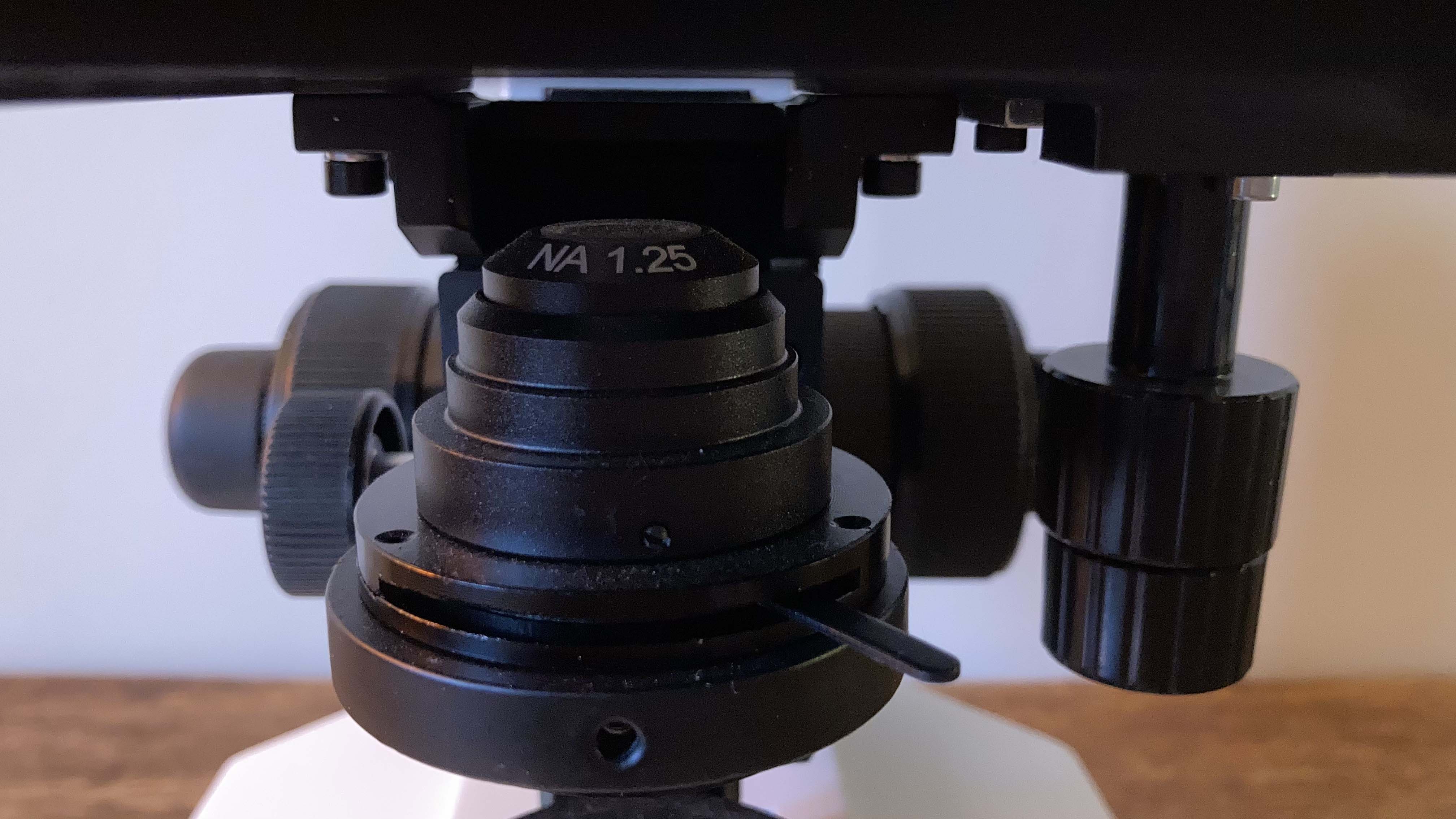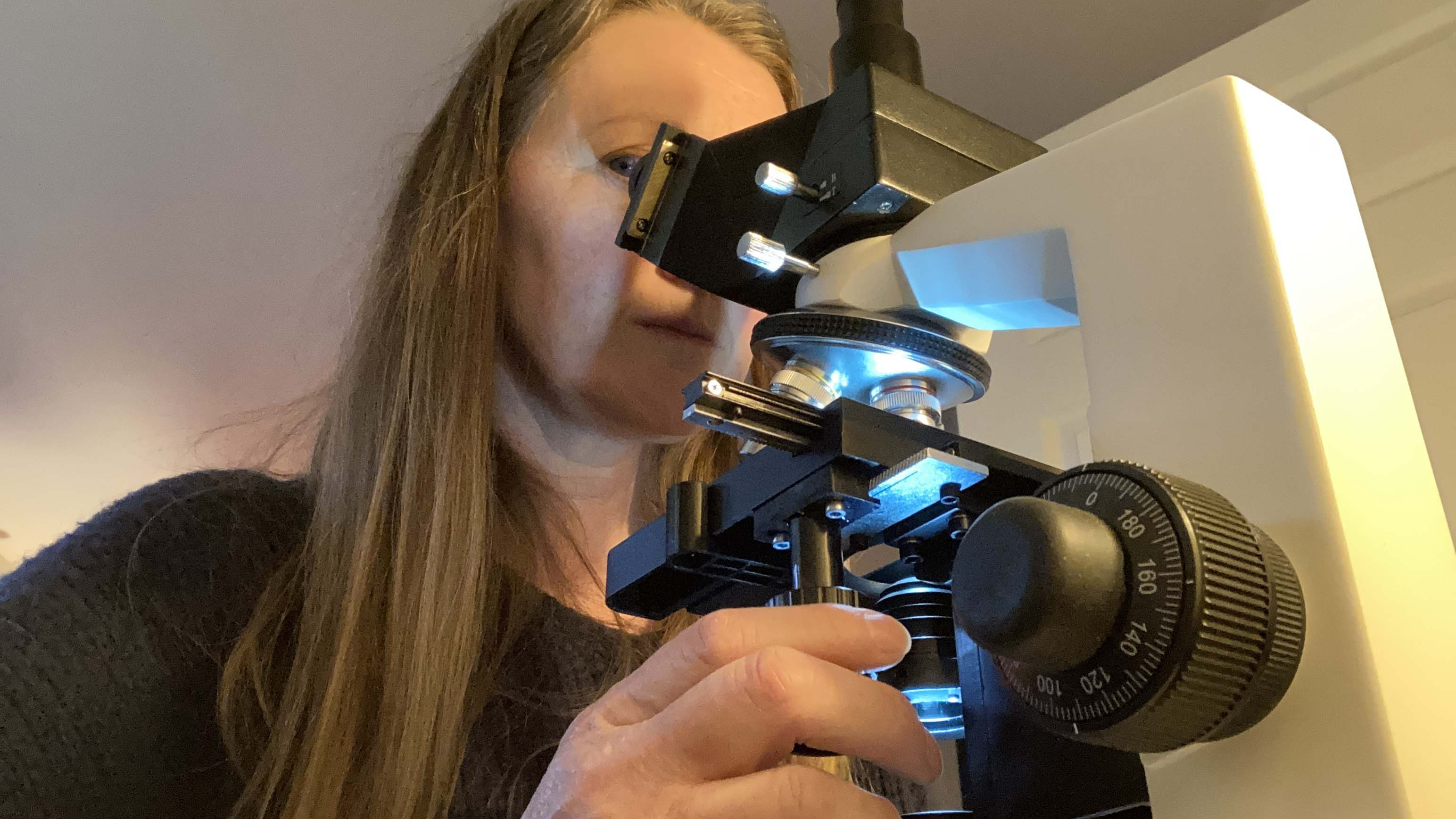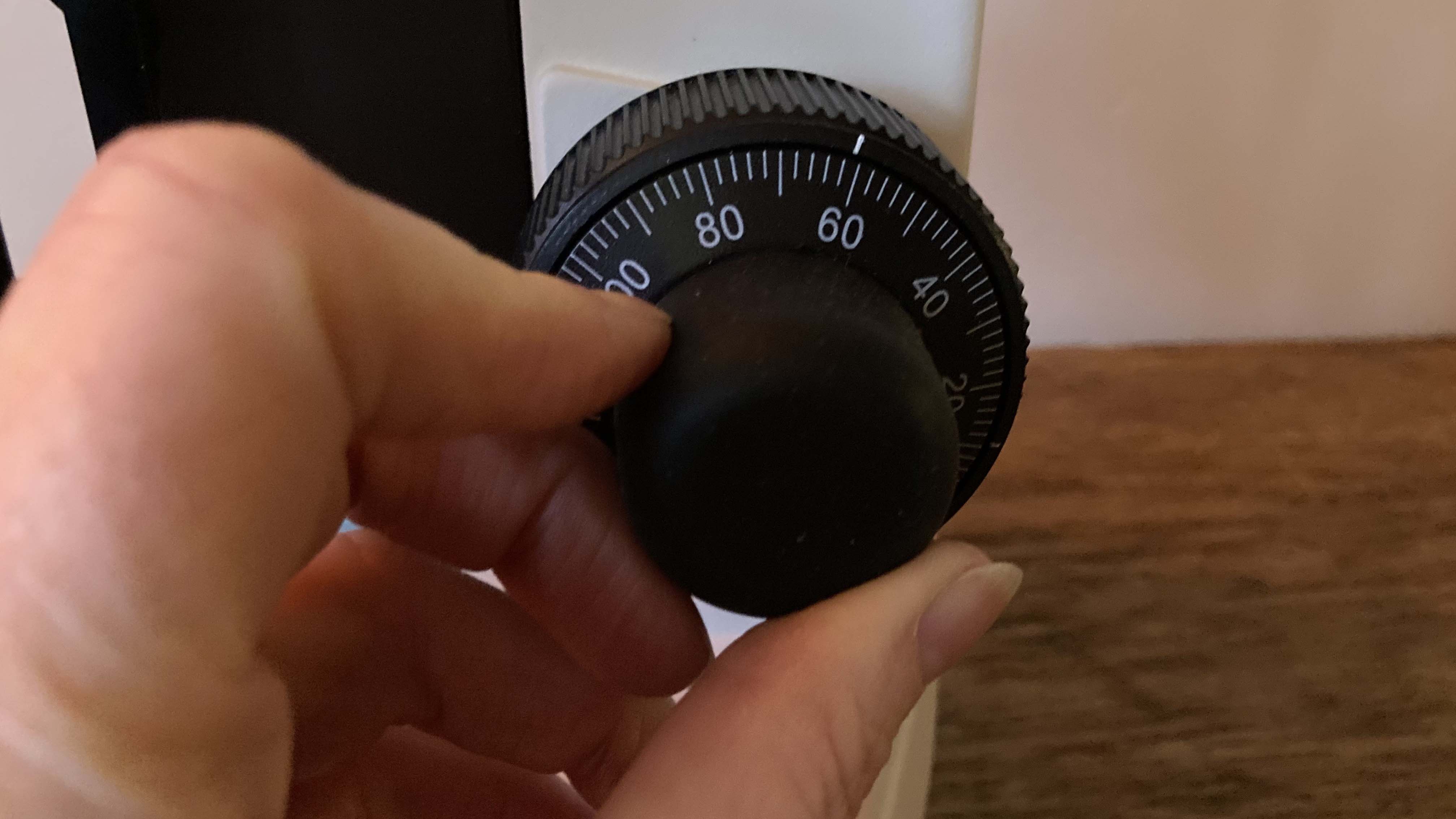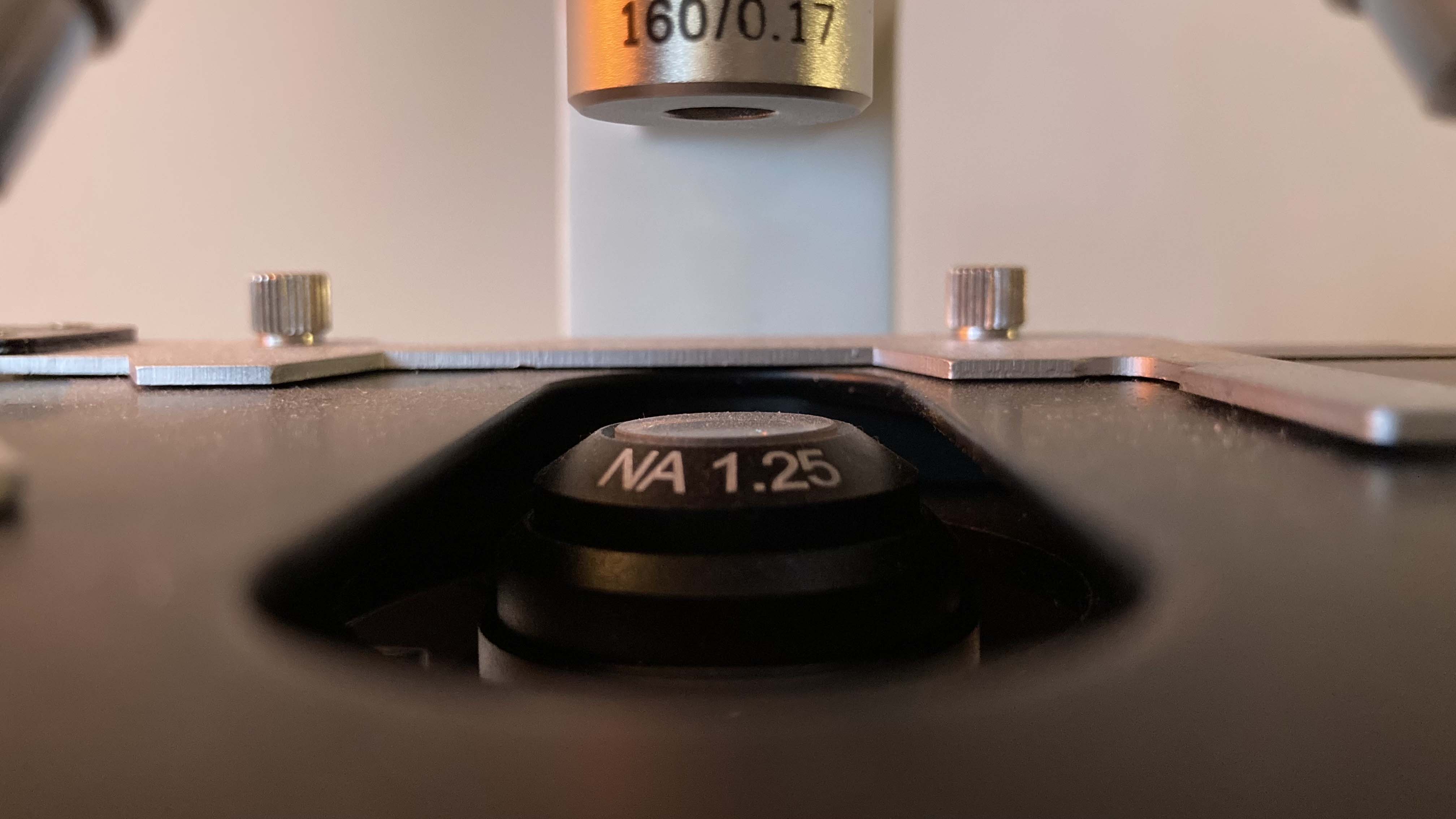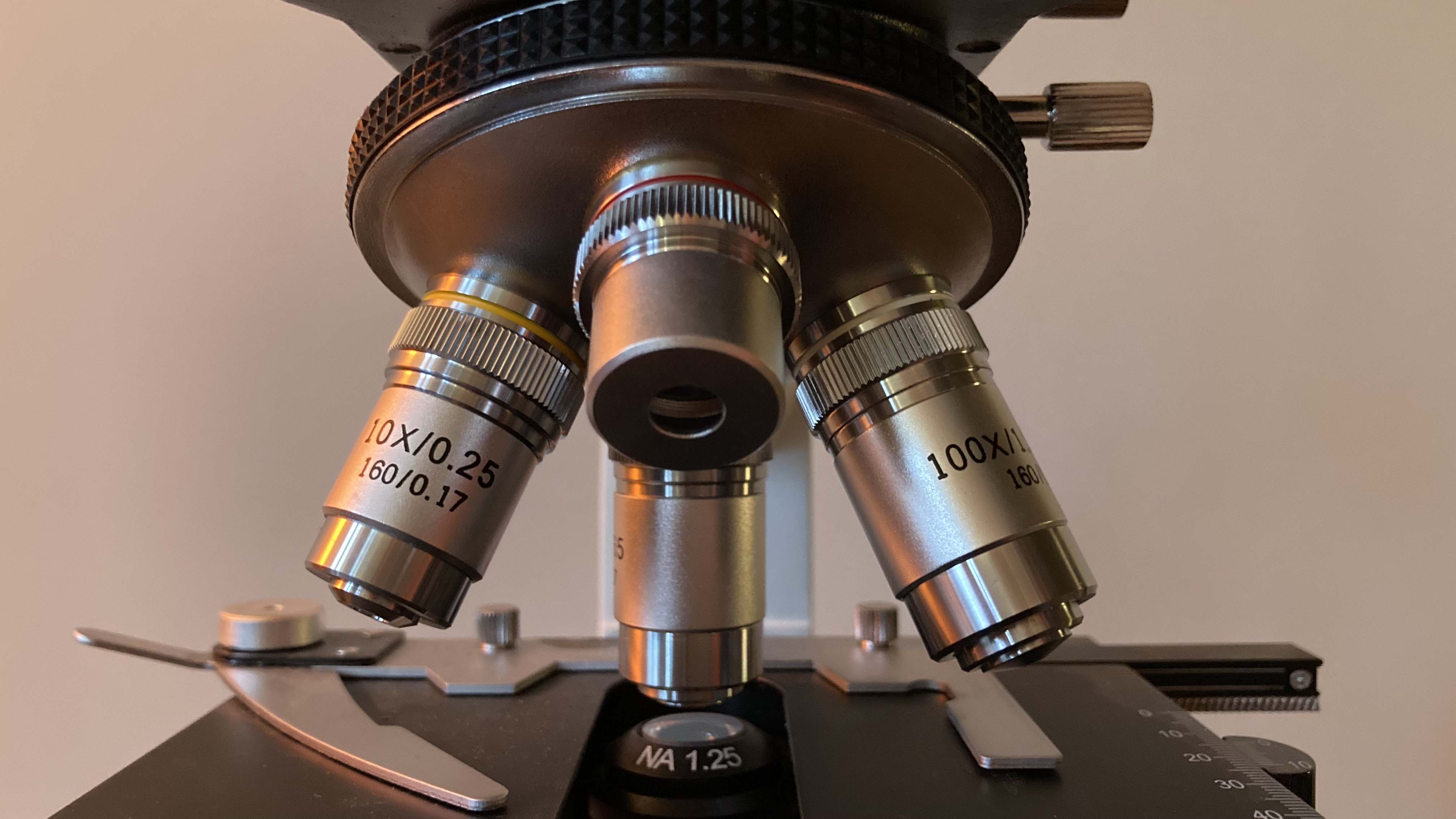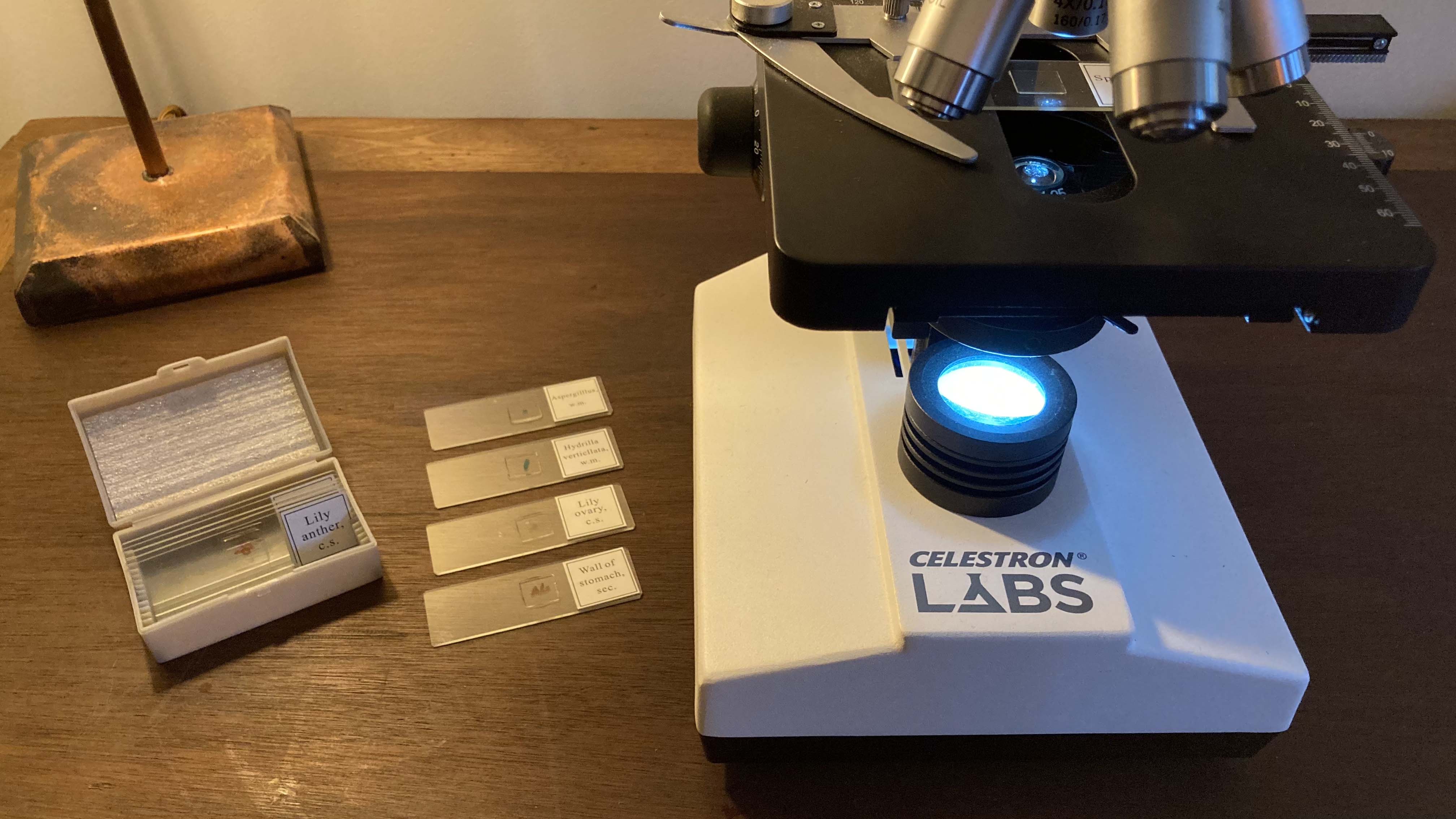Why you can trust Live Science
Our expert reviewers spend hours testing and comparing products and services so you can choose the best ones for you. Find out more about how we test.
Celestron Labs’ CB2000C Advanced Biological Microscope is a mid-priced instrument that boasts a wealth of professional features, such as 40X to 2000X magnification, stereo imagery, trinocular eyepiece tube, XY mechanical stage and adjustable illumination, and comes with a set of prepared slides and filters.
Key specifications
Head: Binocular with 45-degree incline and additional trinocular eyepiece tube
Eyepieces: Two WF 10x with pointer, two WF 20X
Objective lenses: 4X, 10X, 40X and 100X achromatic
Stage: Mechanical stage with XY navigation (140 mm x 140 mm)
Light source: Adjustable, halogen
Condenser: Abbe N.A. 1.25 with adjustable height
Focusing: Coaxial (coarse and fine)
We enjoyed reviewing the CB2000C. Its trinocular capability enabled collaborative working and pupils had the benefit of real-time advice and feedback. As an educational tool, this was hugely beneficial. The large magnification range meant it was possible to examine a wide variety of biological specimens from whole mini organisms to microorganisms and cellular organelles.
Made from sturdy, quality materials, this biological microscope by Celestron Labs is robust and durable and well suited to use in a professional, commercial or educational laboratory. Some features were complex and the microscope did need setting up. However, we would gladly recommend this model to anyone with a little experience.
Celestron Labs CB2000C Advanced Biological Trinocular Microscope review
Design
- Trinocular eyepiece tube allows second viewer
- Multiple professional features
- Robust
The CB2000C Advanced Biological Trinocular Microscope by Celestron Labs has been designed with a number of aims: to be robust, to give stereo images, to allow for a secondary viewer and to give a professional feel via a number of technical features.
The solid, wide base gave a confident sturdiness to this microscope. Coupled with high-quality materials such as a metal body and glass optics, this machine felt reassuringly robust. At 5.5 kg (12lbs), it is one of the heavier student microscopes, but has a strong carry handle and is unlikely to be used by small children. The knobs and dials all fit and turn well and felt durable in use..
Secondary viewer capability has been made possible by attaching a third eyepiece tube to the head. Trinocular viewing allowed us to observe the specimens ocularly, in real time. To deal with the change in light intensity that comes with a trinocular microscope, Celestron Labs has designed a binocular to trinocular button, so that the trinocular eyepiece tube is not illuminated when not in use. Thus, optimum illumination can be achieved through the binocular eyepieces.
Additionally, as the light pathway moves independently through each binocular eyepiece, stereo images are observed.
We were impressed to find that the CB2000C by Celestron Labs has been designed with numerous features that mechanically and optically improve the quality of images possible with a mid-range microscope and help it to live up to its ‘Advanced’ title.
Firstly, having a quadruple nosepiece has enabled four objective lenses to be fitted, from 4X to 100X. Although we needed to set up the head, the lenses screwed in securely and easily. As the binocular eyepieces came in 10X and 20X, we achieved a range of magnification from 40X to 2000X, resulting in a design that could be used to view specimens from whole insects all the way down to organelles inside body cells.
Secondly, the slide clip is activated from the side and is secure and unobtrusive. The XY mechanical stage had a decent movement, 140 mm x 140 mm, and was smooth and easy to maneuver, making slide navigation a pleasure.
A third design mechanism is to have the rough and fine focusing knobs rotating about the same axis. This coaxial movement is more ergonomic as the hand can remain in the same place throughout operation.
Lastly, the CB2000C has multiple ways in which luminosity can be altered. The halogen illuminator is adjustable, so can be dimmed or made brighter where necessary. The Abbe condenser is movable and can be raised and lowered simply with the Abbe adjustment knob. For directing the light onto the slide, the iris diaphragm can be opened or closed as required.
Finally, this Celestron Labs Microscope comes with three filters to enhance images. A frosted one to diffuse the light, a blue filter to color-correct the yellow light from the halogen bulb and a green one to make the images clearer.
Overall, we were impressed with the amount of advanced features that have been deployed to ensure the Celestron Labs Advanced Biological Trinocular Microscope feels professional and worth its mid-range price tag.
Performance
- Stereo viewing
- Decent resolution
- Clarity better through stereo eyepiece tubes
Having an abundance of advanced mechanical, technical and optical features and bearing the Celestron name, we anticipated a high-performing precision instrument when reviewing the CB2000C. While the high-quality glass optics, range of lenses and illumination options did deliver in terms of stereo images with high resolution and high power magnification, it was hugely frustrating that a number of quality control issues made using the microscope annoying and less pleasurable.
Setting up the binocular interpupillary distance using the binocular tube slide and the diopters was fiddly, but worth it to see the prepared slides in 3D. Some more economic stereo microscopes give three-dimensional images at the expense of magnification. The CB2000C model, by Celestron Labs, showed superb layering of spirogyra algae at low magnification. At high power, using the blue filter, we were able to identify subcellular structures such as the nucleus, chloroplasts, cytoplasmic strands and the cell wall. The blue filter helped to reduce some visual graininess seen at magnifications of 400X and above.
The XY mechanical stage performed flawlessly and was smooth, well functioning and a pleasure to use. The slide clip provided a secure fastening for the slide and allowed quick and easy exchange of slides.
The main downside to this particular microscope was with quality control. There seemed to be a problem with either the focusing knobs or the stage. The knobs felt smooth and moved the stage up and down to achieve focus with ease. Unfortunately, the mechanics did not hold focus and when the focusing knobs weren’t being held, the image went went fuzzy instantly and was completely out of focus within a few seconds. While investigating the problem, we noticed that the stage visibly fell downwards once free to do so. Over a minute, the stage lowered by 5 mm (0.2-inches). We managed to reduce this distance by activating the stage height restriction switch, but it was still noticeable enough to impair focusing and affect clarity.
Although we could still achieve focus and test functionality, by keeping hold of the rough focusing knob, doing so limited the amount of freedom we had to perform multiple operations. It is beneficial to have both hands free to simultaneously interchange objective lenses, navigate the slide, adjust illumination etc. It is also essential for focus to be held while two-handed tasks such as changing a slide, filter or lenses are carred out.
Functionality
- Excellent for shared viewing
- Easy and secure slide navigation
- Adjustable illumination and filters
When considering the functionality of the Celestron Labs CB2000C Advanced Biological Trinocular Microscope, we need to be mindful of the impact of simultaneously using multiple functions. We also need to address its trinocular function as a tool for teaching and its production of stereo imagery.
It is also worth mentioning that the CB2000C, by Celestron Labs, needed setting up before use: it is not supplied ready for use. It is quite usual to have to insert the eyepiece lenses, especially if they are interchangeable anyway. However, the CB2000C needed much more construction than is standard.
The head needed to be inserted into the microscope arm and needed locking into place. The four objective lenses needed to be securely screwed into the nosepiece holes, in the correct order. Additionally, the trinocular eyepiece tube needed to be screwed into the head and an eyepiece lens attached. On the plus side, detailed instructions for this set-up process were included in the user manual, in multiple languages, and were simple to follow.
As a tool for teaching, the CB2000C by Celestron Labs relies on secondary viewing via the trinocular tube. Tutors can view a pupil’s specimen while in use, without disturbing them. We found this hugely beneficial when pointing out cheek cells, subcellular structures and insect anatomy. Note that the trinocular eyepiece lens will always be a different magnification to the binocular eyepiece lenses because there are only two of each type. This will affect both the resolution and field of view observed by each viewer. At one point we did have three users, one on each eyepiece. Although this made stereo viewing impossible, it was great for collaborative work.
The advanced features all functioned well together, to enable the creation of good quality images. Navigating the slide using the XY mechanical stage increased functionality if operated while focusing at varying magnifications. Light could pinpoint the specimen using a small diaphragm aperture. Once scanning the slide, light intensity could be adjusted with the illuminator knob, or by changing the Abbe condenser height or iris diaphragm.
We found the knobs to be ergonomically placed and we were able to control the microscope by feel, rather than having to look. To minimise the risk of lens damage, Celestron Labs has added a height restriction knob. This is particularly good for preventing damage to longer, high-power lenses.
One functionality issue was with the Abbe condenser. It has been designed to have an adjustable height, to help control illumination — a lovely idea, in theory. However, when focusing requires the stage to be moved downwards, it grabs onto the Abbe condenser. When the stage is raised, it then pulls the condenser up with it, rather than letting the two move independently. Perhaps this is another quality control issue, rather than being intentional. Whatever the reason, it would be better if this did not happen.
In summary, we enjoyed using this microscope for teaching, and students reported that they liked being able to view in three dimensions. We were sometimes frustrated by quality control issues but could see beyond these, to agree that the CB2000C has a lot of potential as a trinocular biological microscope with multiple advanced features. We recommend the Celestron Labs Advanced Biological Trinocular Microscope for use in professional or teaching laboratories, for budding microbiologists with a little experience.
Should you buy it?
Buy it if:
✅ You want to upgrade to a mid-range microscope: The XY navigation, choice of illumination and quadruple nosepiece offer intermediate users a more professional and robust optical instrument.
✅ You would like to view your specimens in 3D: The separate images from both eyepiece tubes combine to create a three-dimensional image.
Don’t buy it if:
❌ You would like to examine solid specimens: There is no top light option with the CB2000C Advanced Biological Microscope.
❌ You have impaired sight in one eye: The stereo viewing capacity depends on ocular information from both eyes.
The Celestron Labs Advanced Biological Trinocular Microscope has a wealth of functions that will give an experienced user the opportunity to manipulate minute details of their optical images, and to view clear, highly magnified biological specimens. We recommend this mid-range microscope for home, school or laboratory use, for research or teaching purposes, if you desire a stereo image.
If this product isn’t for you
For a trinocular microscope with a camera function, Swift does the SW380T compound trinocular with up to 2,500X magnification.
For a binocular compound microscope, the CB1000CF by Celestron Labs is ideal if you do not need stereo viewing. It comes with a lower price tag, too.
How we test
During an adult learning session, the microscope was constructed and set up. Users learned how to create and view slides of their own cheek cells, as well as leaf peels from a variety of different plants; to observe stomata distribution. Collaborative viewing and discussion was possible due to the trinocular eyepiece tube.
Later, we had free rein with the prepared slides that came with the CB2000C. We experimented with lighting options via the adjustable condenser height, changing the diaphragm dilation and investigated the image differences with the supplied filters.
